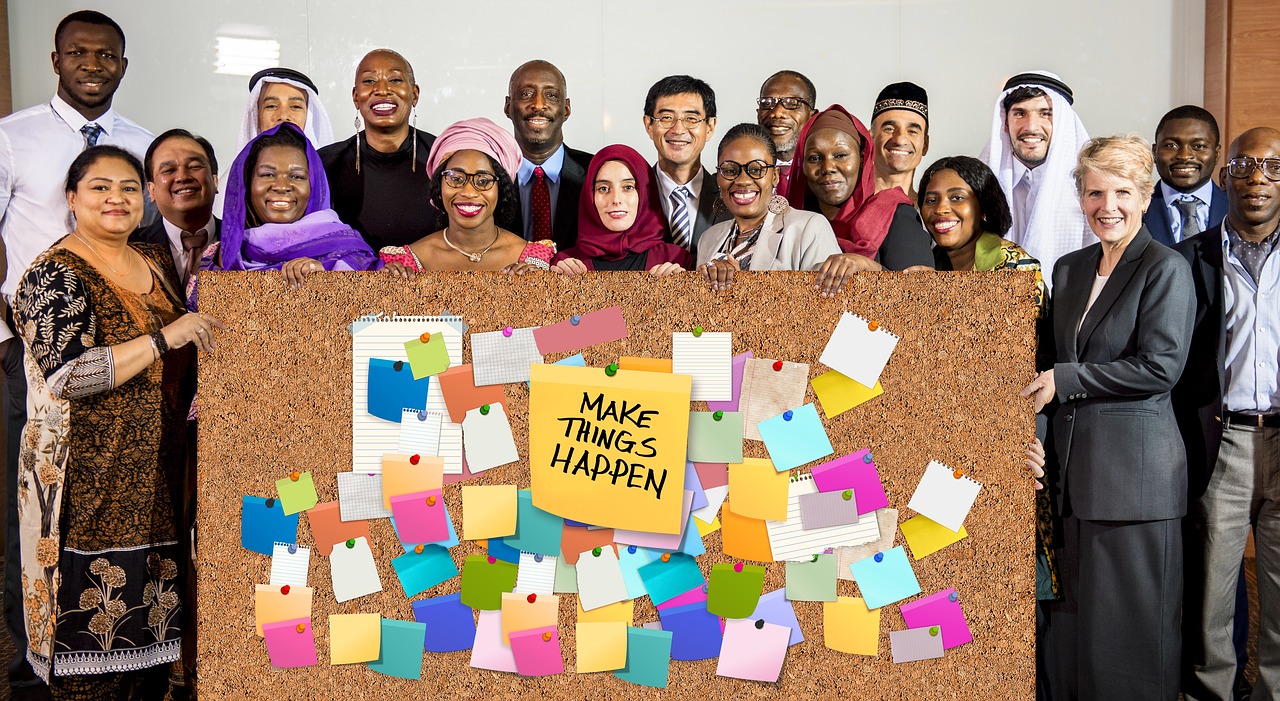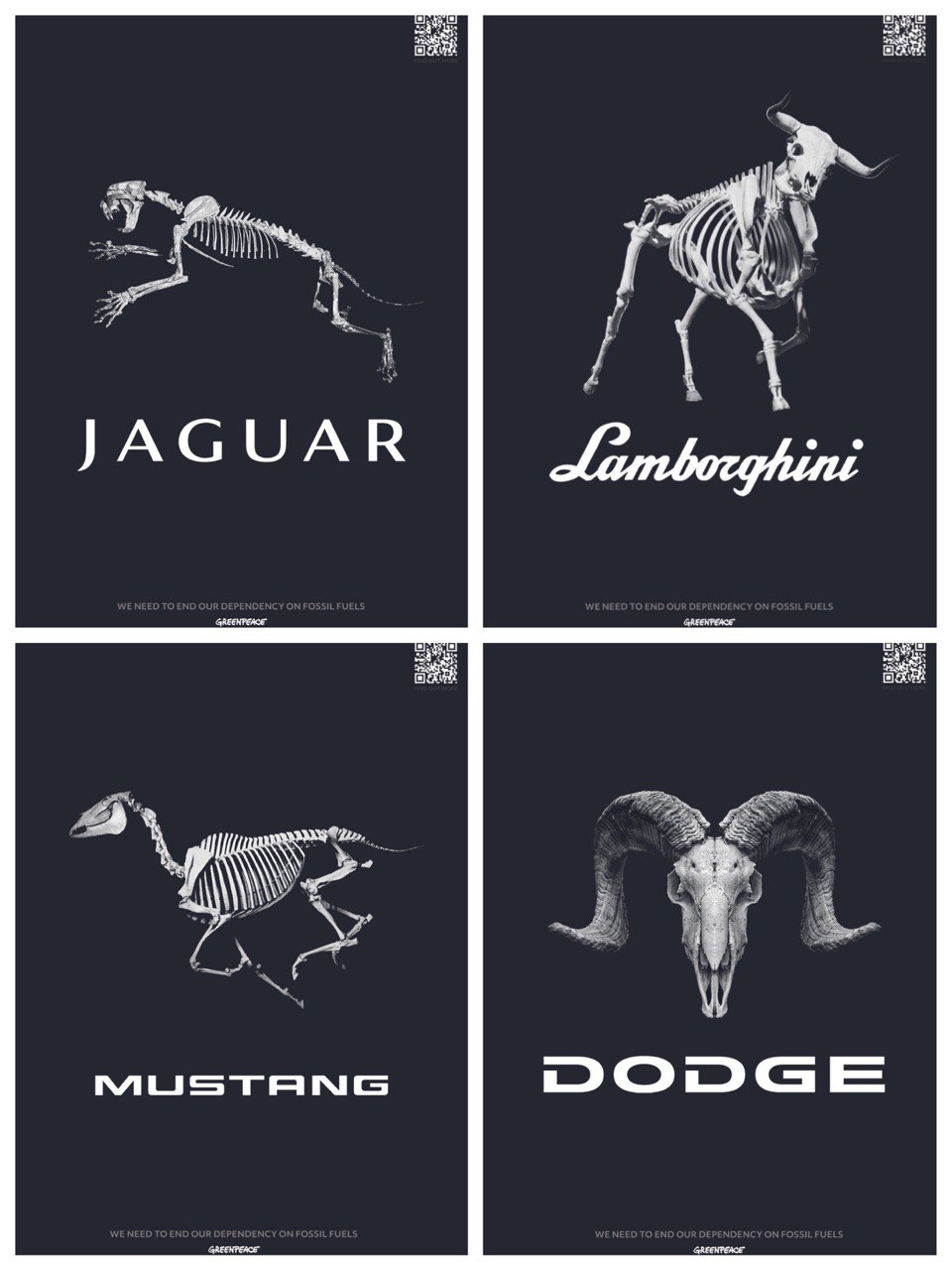Concepts

Concept based learning (CBL), as described by consultant Dr. H. Lynn Erickson, is a three-dimensional model that frames facts (subject content) and skills with concepts of the Business Management course (see Figure 1). The rigour of the Business Management course creates two approaches to teaching and learning:
- Either students can be told what they need to know (based on factual knowledge and subject specific skills in Business Management), or
- Teachers can get their students excited enough to discover and deepen their understanding of Business Management for themselves.

Using a CBL approach to teaching and learning helps to develop a deeper understanding of Business Management topics that students find of personal interest, relevance, and meaning.

There is no universally accepted definition of what a concept is and academics could debate this from different perspectives and disciplines. Nevertheless, Dr. Erickson argues concepts have certain characteristics:
Universal, i.e., they are transferable and cut across disciplines
Timeless
Abstract
Act as foundational organizers
Form the basis for inquiry.
Concepts are not standalone ideas but connect with each other. CBL is a continuous process of building on what learners already know, adjusting what they thought before, and clearing up any misunderstandings or misconceptions. The power of teaching through concepts is what Dr. Erickson calls ‘synergistic learning’ – enabling students to get to the bigger picture, the ability to think from different perspectives, providing a framework for transferring knowledge, and making deeper connections within and across disciplines.
In Business Management, concepts are used to give students the tools necessary to make sense of the world. CBL provides conceptual lenses so students can make better sense of their learning. The subject content in Business Management will change over time, but CBL can help to future proof student learning and understanding of the complexities of the subject.
Theory of Knowledge (TOK)

If it is not possible to teach everything that is important, isn’t it more important to reconsider how to determine what we think we know is worth learning?
Concept-based learning strives to promote ‘enduring understanding’, i.e. generalisations or the ‘big ideas’ of subject content and skills. In essence, it is about scaffolding thinking by investigating the relationship between two or more of the CESC concepts (see next section below). There are three levels of guiding questions in the CBL approach:
Level 1. Factual questions (Students need to know… do…). These factual questions are lifted from the syllabus, such as:
• What are the reasons for the growth and evolution of multinational companies (MNCs)?
• In what ways have Internet technologies disrupted indigenous cultures?
Level 2. Conceptual questions (Students will understand), for example:
• Why do nations desire to innovate?
• How does a multinational company impact the culture of a host country?
• At what time does a business decide to expand (grow)?
Level 3. Provocative questions (or debatable questions), for example:
• Is all innovation beneficial to individuals and society?
• Does a country’s ability to develop depend on its willingness and ability to embrace international trade?
• Does international trade necessitate a change in values and traditional cultures?

“If we teach today’s students as we taught yesterday’s, we rob them of tomorrow.”
John Dewey (1859 - 1952), American educational reformer
The new IB DP Business Management syllabus sees a revised conceptual framework consisting of four interdisciplinary concepts (CESC):
The key concepts are explicitly assessed in the Internal Assessment, specifically in assessment criterion A (worth up to 5 marks). However, teaching and learning of these key concepts must be authentic. This means that teachers should integrate the four key concepts by using different types of inquiry and making continual reference to real-world examples throughout the course.
These four key concepts enable students to explore the content of the new syllabus from multiple lenses or perspectives. Each unit in the new course begins with statements about conceptual understandings that include the four key concepts and summarizes important ideas and core processes that are central to the unit of the syllabus. Inquiry statements are also included for each unit to support teachers and students.
Top tip 1!
Using a Concept Diamond in the IA

This activity / top tip comes from IB workshops where participants are asked to work in small groups to determine their interpretation of different key concepts from the course.
Instructions
Work in small groups of 3 or 4 people.
Each group is assigned one of the four key concepts.
Discuss and come up with 9 words or phrases that the group agree best describe their allocated key concept.
Then rank the 9 words or phrases placed in a diamond as shown in the image above, with the most ‘valued’ word or phrase placed at the top and the least ‘valued’ one at the bottom.
Post your concept diamond on the walls of the classroom.
Finally, do a gallery walk around the classroom and look at each group’s perspectives on the different key concepts.
Follow-up questions for discussion:
Were the other groups able to guess your group's key concept?
How long did it take for others to identify your key concept?
Do these words have to be positive words only?
Where there any key concepts referred to in your allocated key concept?*
*Remember for the IA that only one key concept should be used in your business research project.
Top tip 2!
Whilst it is not necessary to include the chosen key concept in the research question of the Internal Assessment, it is vital for students to make explicit reference to the use of the chosen conceptual lens throughout their work. This includes specific and purposeful inclusion of the key concept in the following parts of the the business research project:
Introduction
Body, and
Conclusion
Creativity

Creativity is the process of generating new ideas and considering existing ideas from new perspectives. Creativity includes the ability to recognize the value of ideas when developing innovative responses to problems; it may be evident in the process as well as outcomes, products or solutions. The creation of ideas and solutions involves a process of synthesizing and evaluating in response to surrounding changes.
Read more about creativity as a key concept by clicking the link here.
Ethics

Ethics refers to moral principles that govern the behaviour of a person or group of people. In understanding ethics, it is important to note that every business decision has moral implications. These decision-making processes are based on moral philosophies or guidelines that influence the way a business conducts itself. The consequences of these implications can be significant for internal and external stakeholders and the natural environment. Essentially, ethics is the discipline or study of moral philosophy.
Read more about ethics as a key concept by clicking the link here.
Sustainability

Sustainability is "meeting the needs of the present without compromising the ability of future generations to meet their own needs" (UN 1987). Sustainability can be enhanced by conserving resources or finding more efficient ways to produce or discover new resources. Business decisions should consider the triple bottom line of people, planet and profit and their resulting impacts.
Read more about sustainability as a key concept by clicking the link here.
Change

"You cannot hope to make progress in areas where you have taken no action."
- Epictetus, Greek philosopher
Change is explored from several perspectives as businesses operate in a dynamic world that is subject to continual change. Change may be a conversion, transformation, or movement from one form, state or value to another. Inquiry into the concept of change involves understanding and evaluating causes, processes, and consequences.
Due to increasing competition, new technologies, and markets as well as changing trends in consumer behaviour, business organizations need to adapt their objectives, strategies, and operations if they are to succeed. This success emerges from their ability to research and respond to signals in both the internal and external environment.
Read more about change as a key concept by clicking the link here.
This Coggle provides a brief overview of concepts and their use or purpose in the DP Business Management course.
Case Study - Greenpeace advertising campaign

The above shows images of an advertising campaign created for Greenpeace, emphasising that we can no longer rely on fossil fuels.
How does this portray each of the key concepts of creativity, sustainability, change, and ethics?
ATL Activity 1 - The key concepts in context (1)
Read this article about Lego from The Guardian and answer the questions that follow.
Lego unveiled its first bricks made from what recycled material?
Where is Lego from?
What material are most Lego bricks made from?
The prototype 2×4 bricks are the results of how many years of experimenting?
The prototype bricks were the result of how many different variations of materials?
On average, a single 1-litre bottle provides enough material to produce how many 4×2 Lego bricks?
How long does Lego expect the next phase of its testing to take?
How many people at Lego are working on making its products more sustainable?
How much has Lego stated it would invest to make its products more sustainable?
Since 2018, Lego has been producing parts from bio-polyethylene from what raw material?
This activity is an example of how teachers can use case studies to help link context, content, and concepts in the DP Business Management course. This particular example is based on Lego (as in ATL Activity 2 below).
Answers
Lego unveiled its first bricks made from what recycled material?
Plastic bottlesWhere is Lego from?
DenmarkWhat material are most Lego bricks made from?
ABS (plastic)The prototype 2×4 bricks are the results of how many years of experimenting?
Three yearsThe prototype bricks were the result of how many different variations of materials?
250 variationsOn average, a single 1-litre bottle provides enough material to produce how many 4×2 Lego bricks? 10 bricks
How long does Lego expect the next phase of its testing to take?
At least a yearHow many people at Lego are working on making its products more sustainable?
More than 150 peopleHow much has Lego stated it would invest to make its products more sustainable?
Up to $400m over three yearsSince 2018, Lego has been producing parts from bio-polyethylene from what raw material?
Sustainably sourced sugarcane
Teachers can download a PDF version of this task to use with students by clicking on the icon below.
ATL Activity 2 - The key concepts in context (2)

Investigate the operations of Lego or any business of your choice that connects with each of the 4 key concepts in a contemporary way.
Creativity
Ethics
Sustainability
Change
Your finding must link all 4 CESC concepts.
Be prepared to share your findings with the rest of the class.
Extension task
From the research, consider possible ideas for the Internal Assessment.
One example is The Female Company, a privately held company established in Germany and known for its Tampon Book.
Creativity - Selling tampons inside a book to avoid Germany's highest rate of sales tax.
Ethics - Protecting the interests (and human rights) of women.
Sustainability - Using organic resources in the production of female hygiene products.
Change - Lobbying the government for change in the law.
Teachers can download a PDF version of the activity by clicking the link below.
Embedding the key concepts in the Business Management curriculum
Examples of questions that can be used to extend students' understanding of the contents of the syllabus using this conceptual framework are shown in the section below.
Using the key concepts - Creativity

Unit 1.6 - To what extent does the threat or presence of MNCs foster creativity in the host country?
Unit 2.1 - What is the role of creativity in the gig economy?
Unit 2.2 - Is there any role for creativity in Unlinkbureaucratic organizations?
Unit 2.2 - To what extent does bureaucracy discourage creativity in the workplace?
Unit 2.3 - Do autocratic leaders necessarily suppress creativity in the workplace? Is it possible for creative employees to thrive under a system of autocratic leadership?
Unit 2.4 - Do autocratic leaders necessarily suppress creativity in the workplace?
Unit 2.6 - To what extent does formal communication restrict creativity in the workplace?
Unit 3.3 - What role does creativity have in developing the revenue streams of businesses?
Unit 3.4 - With reference to intellectual property rights (IPRs) as non-current assets, discuss the importance of creativity for business success.
Unit 3.9 - Do budgets hinder or foster creativity in business organizations?
Unit 4.1 - With reference to an organization of your choice, examine how creativity has influenced its marketing practices.
Unit 4.5 - What is the role of creativity in marketing?
Unit 5.8 - Discuss the role of creativity in research and development (R&D).
IB Core (CAS) - What links can students make to the CAS programme?

How do the CESC concepts integrate with the CAS Programme?
Using the key concepts - Ethics

Unit 1.2 - Are non-governmental organizations (NGOs) ethical?
Unit 1.2 - How ethical are for-profit social enterprises?
Unit 1.3 - How might ethics help to drive vision and mission?
Unit 2.1 - Are human resource strategies used to deal with resistance to change (such as manipulation and co-option or explicit and implicit coercion) ethical? Do context and perspectives matter?
Unit 2.1 - Is it ethical that workers in the gig economy are not generally protected by employment laws in the same way as those who work for an employer?
Unit 2.3 - Discuss the extent to which ethical considerations influence the most optimal leadership style in business organizations.
Unit 2.5 - Discuss how ethics influence organizational (corporate) culture.
Unit 4.4 - Discuss the role of ethics for researchers conducting both primary and secondary market research.
Unit 5.9 - To what extent is it ethical for an employer to scrutinise the social media posts of a prospective employee?
Using the key concepts - Sustainability

Unit 1.3 - How might the pursuit of ethical objectives affect a for-profit organization's triple bottom line?
Unit 1.3 - To what extent is corporate social responsibility (CSR) sustainable for for-profit organizations in highly competitive markets?
Unit 4.1 - With reference to an organization of your choice, examine how sustainability has influenced its marketing strategies.
Unit 4.2 - With reference to an organization of your choice, discuss how sustainability has influenced its marketing planning.
Unit 5.1 - With reference to an organization that you have studied, examine how sustainability has impacted on its operations management strategy.
BMT 8 (Circular business models) - Aside from sustainability, which of the key concepts is most important to the study of circular business models - change, ethics, or creativity?
Using the key concepts - Change

Unit 1.1 - How might change create both challenges and opportunities for starting up a business?
Unit 1.5 - How can managers and decision makers know whether the growth and evolution are worthwhile changes in their organizations?
Unit 2.4 - Examine the relationship between methods of financial and non-financial motivation with change in business organizations.
Unit 2.5 (HL only) - To what extent should culture be adaptive to change?
Unit 2.7 (HL only) - Discuss the most effective ways to deal with resistance to change in organizations.
Unit 3.3 - Examine the main causes of changes to an organization's costs and revenues over time.
Unit 3.9 (HL only) - Do budget hinder or foster organizational change?
Unit 4.1 - With reference to an organization you have studied, discuss how change has influenced the role of marketing.
Unit 4.5 (Product) - Discuss how change has influenced the product life cycle for an organization or brand of your choice.
Unit 4.5 (Promotion) - Examine how developments in social media platforms could change an organization’s marketing strategies.
Unit 4.6 (HL only) - Discuss how international marketing strategies may evolve in response to a change in customer preferences.
Unit 5.4 - Examine the reasons why changes to business location can create both advantages and disadvantages to different stakeholder groups.
Unit 5.7 (HL only) - Discuss the impact of contingency planning and crisis management in the context of change.
BMT 5 (Business plans) - How do business plans help businesses to manage change more effectively?
Finally, a notable change to assessment of conceptual understanding is the requirement for students to produce their Internal Assessment about a real-world business issue or problem facing an actual organization using one of these four key concepts in addition to applying their knowledge of appropriate Business Management tools, theories, and techniques.
Teachers can download the key concept posters produced by ManageBac by clicking the icon below.
Permission granted by Tom Brodie (Curriculum Coordinator at ManageBac Curriculum Team) and the Faria Education Group to reshare these posters here with the InThinking Business Management community.
Selected Pages


Concepts
Creativity
Key concepts - Creativity"Sometimes it is the people no one can imagine anything of who do the things no one can imagine."-...

Concepts
Sustainability
The key concepts - Sustainability“We need to think of the future and the planet we are going to leave to our children...



